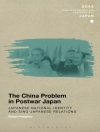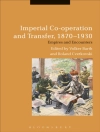Everyday life in the East German Socialist Unity Party revolved heavily around maintaining the “party line” in all areas of society, whether through direct authority or corruption. Spanning a long period of the GDR’s history, from 1946 through 1989, Rüdiger Bergien presents the first study that examines the complexities of the central party’s communist apparatus. He focuses on their role as ideological watchdogs, as they fostered an underbelly and “inner life” for their employees to integrate the party’s pillars throughout East German society. Inside Party Headquarters reviews not only the party’s modes power and state interaction, but also the processes of negotiation and disputation preceding formal Politburo decisions, advancing the available detail and discourse surrounding this formative and volatile stretch of German history.
Tabella dei contenuti
List of Figures, Tables and Diagrams
Acknowledgments
List of Abbreviations
Introduction
Chapter 1. Between the KPD and the CPSU (1945-49)
Chapter 2. The Arduous Road to Power: The Central Committee Apparatus in the Decade of Building Socialism (1950-59)
Chapter 3. The Apparatus as a Communication Space
Chapter 4. A Brake on Reforms? The Apparatus in the Late Ulbricht Era (1960–70)
Chapter 5. “The Mf S Only Comes Up to Our Chest”? The Central Committee Apparatus and State Security
Chapter 6. “In the General Staff of the Party”: The Honecker Apparatus (1971-85)
Chapter 7. “Funding Loyalty?”~
Chapter 8. Decaying Authority and Self-Dissolution: The Apparatus in the “Final Crisis”
Conclusion: The Assimilated “Superstate”
Interviews Cited
Bibliography
Index
Circa l’autore
Rüdiger Bergien is a Professor of Intelligence History at the Federal University for Applied Administrative Sciences, Berlin, Germany. His recent publications include the edited volume Communist Parties Revisited, Socio-Cultural Approaches to Party Rule in the Soviet Bloc, 1956-1991, New York: Berghahn Books, 2017.












